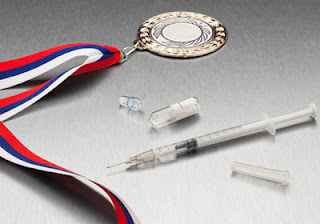 I recently saw an interesting case. A woman was being treated with cidofovir for adenovirus which was presumed to be responsible for an acute cardiomyopathy. Concurrent with cidofovir, she was also receiving probenecid for renoprotection, which I was not familiar with.
I recently saw an interesting case. A woman was being treated with cidofovir for adenovirus which was presumed to be responsible for an acute cardiomyopathy. Concurrent with cidofovir, she was also receiving probenecid for renoprotection, which I was not familiar with.
Cidofovir is a nucleotide analogue used primarily to treat CMV retinitis in patients with AIDS. However, cidofovir is also used to treat a number of DNA viruses including adenovirus. The main toxicity of cidofovir is nephrotoxicity, which can manifest as AKI, proteinuria, or a Fanconi-type syndrome with proximal tubular dysfunction. Nephrotoxicity can be reduced by co-administration with iv fluids and probenecid (the dosing regimen for the latter is 2g po 3 hours prior to the dose, then 1 g po 2 hours and 8 hours after.
How does probenecid reduce cidofovir nephrotoxicity? Over 80% of cidofovir is excreted unchanged in the urine in 24 hours. Most of this occurs via glomerular filtration, but cidofovir is also actively taken up from blood by the kidneys via the "organic anion transporter" located on the basolateral side of renal proximal tubular cells, and is then more slowly secreted into the tubular lumen. Renal clearance of cidofovir therefore exceeds the corresponding GFR.
The relatively slow secretion of cidofovir into the tubular lumen, in comparison to uptake from the blood, results in a long intracellular half-life of the drug in the proximal tubular cells which appears to underlie the nephrotoxicity. Probenecid, by inhibiting the organic anion transporter, prevents tubular uptake and protects the kidneys. This was demonstrated nicely in a pilot study in HIV patients. Interestingly, and somewhat paradoxically, this means that probenecid reduces nephrotoxicity while also DECREASING the renal clearance of the drug and thus INCREASING serum cidofovir concentrations as much as two-fold.
Probenecid is a banned drug for athletes for a related reason - because it blocks entry of certain drugs into the urine, it has been used as a masking agent for other banned performance-enhancing drugs including steroids.
Posted by David Leaf















2 comments:
Interesting. ..
Hi, Not quite sure I understand your reasoning:
". Interestingly, and somewhat paradoxically, this means that probenecid reduces nephrotoxicity while also DECREASING the renal clearance of the drug and thus INCREASING serum cidofovir concentrations as much as two-fold."
If probenecid blocks proximal tubule re-uptake of cidofovir, but cidofovir is filtered in the glomerulous initially, so probenecid should have no effect on it's renal filtering. Only on its re-uptake. So how do you reason that the serum cidofovir concentrations are INCREASED as much as two-fold?
it seems like a one-way journey for cidofovir from what you describe into the tubule, and then out...
unless I'm missing something??
Post a Comment